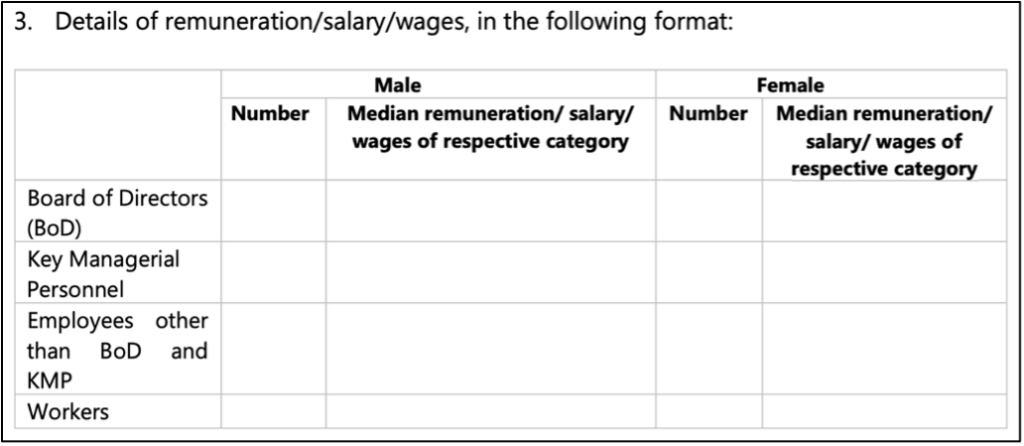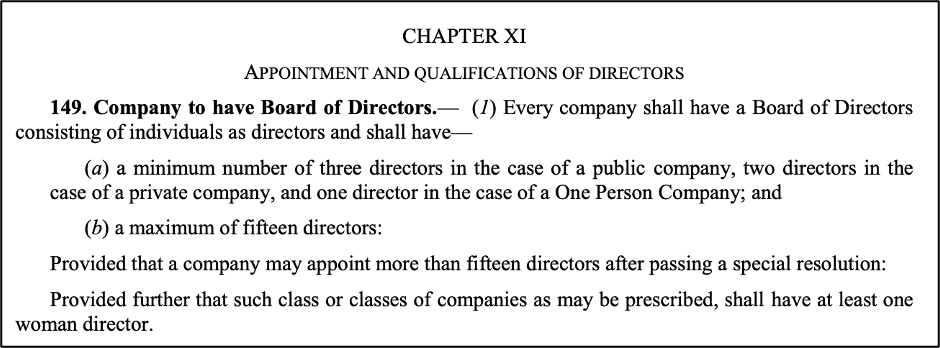Principle 9 of BRSR calls for businesses to respect and promote human rights and provide the gender composition of the Board of Directors (BoD), Key Managerial Personnel (KMP), employees (other than BoD and KMP), and workers, along with the median remuneration or salary or wages for each respective category. The latest data indicates that the ratio of females to males is lowest at the Key Managerial Personnel level, with only 147 females for every 1000 males.
Gender inequality in the workplace continues to be a deeply entrenched issue, with significant disparities in both representation and compensation. While progress has been made in recent years, women remain underrepresented in leadership roles and certain industries, and gender-based pay gaps persist. These imbalances not only limit individual opportunities but also hinder broader economic and social progress. Factors such as workplace culture, unconscious bias, and unequal access to resources and opportunities contribute to these persistent disparities.
Pay data by gender is part of the Business Responsibility and Sustainability Report (BRSR), which requires the top 1000 companies listed by market capitalization to submit an annual report on their Environmental, Social, and Governance (ESG) practices to the Bombay Stock Exchange (BSE) and National Stock Exchange (NSE). (A detailed explainer by Factly on BRSR can be read here)
Check out comprehensive datasets on Business Responsibility and Sustainability Reports (BRSR) on Dataful
BRSR mandates disclosure of the number of males and females at different levels of the organization, along with their median remuneration
Under Principle 9, which calls for businesses to respect and promote human rights, the gender composition of the Board of Directors (BoD), Key Managerial Personnel (KMP), employees (other than BoD and KMP), and workers are reported, along with the median remuneration or salary or wages for each respective category. This information is useful for assessing how companies are addressing gender inequality, particularly in leadership roles and compensation. By disclosing these details, businesses provide transparency regarding their progress toward gender equality.

Methodology
The data for the story has been taken from Dataful’s collection of datasets on Business Responsibility and Sustainability Reports. It should be noted that the information in these reports is self-disclosed by the companies and not authenticated. The companies reporting under BRSR used different formats: some followed the calendar year (January 1 to December 31), others used the financial year (April 1 to March 31), and a few reported from October 1 to September 30. However, in this story, we refer to all reports submitted for a particular year, regardless of the reporting period. Our focus is primarily on reports published for 2023, including those covering the entire calendar year 2023 and the fiscal year 2023-24.
Four positions/levels of employment have been covered in the report. These are:
- Board of Directors (BoD): Responsible for governance, strategic oversight, and compliance of the company.
- Key Managerial Personnel (KMP): Includes CEO, Managing Director, CFO, Company Secretary, and other senior officers.
- Employees other than BoD & KMP: Covers all employees excluding the above two.
- Workers: Refers to the operational or labour workforce
Only 147 females per 1000 males in Key Managerial Personnel level in 2023/2023-24
Based on data 1217 reports for 2023/2023-24, no company has reported individuals of other gender in either the Board of Directors (BoD) or Key Managerial Personnel (KMP) positions. The ratio of females per 1000 males is lowest at the Key Managerial Personnel level, with only 147 females for every 1000 males, compared to 221 females per 1000 males in the Board of Directors. In other roles, the ratio increases to 305 females per 1000 males, and even among workers, there are only 184 females per 1000 males.
| Position | Female | Male | Other Gender | Females per 1000 Males |
| Board of Directors (BoD) | 1443 | 6532 | 0 | 221 |
| Other than BoD & KMP | 1641109 | 5385026 | 840113 | 305 |
| Workers | 293110 | 1596877 | 0 | 184 |
| Key Managerial Personnel (KMP) | 535 | 3629 | 0 | 147 |
These figures clearly highlight significant gender disparities across various levels of the organization. While individuals of other genders are underrepresented, the low ratio of females per 1000 males in key managerial roles, compared to other positions, suggests that gender inequality is most pronounced in senior leadership. The higher ratio of females on the Board of Directors is due to the mandatory requirement for listed companies in India to have at least one woman director, as stipulated by the Companies Act, 2013.

Air Transportation is the only sector that employs more females in the ‘Other than BoD and KMP’ category
Considering data across sectors, Air Transportation is the only industry where females outnumber males in the ‘Other than BoD and KMP’ category, likely due to the higher proportion of women in customer-facing roles like cabin crew. In contrast, leadership positions such as BoD and KMP remain male-dominated in this sector. Across all other sectors and categories, males significantly outnumber females. The ratio of females per 1000 males is less than 50 in the ‘Other than BoD and KMP’ across Waste Management, Forestry and Paper, and Food industries.
The highest median remuneration received by males and females varies by Rs. 8.5 crores
The median remuneration/salary/wage has been reported by companies in the BRSR. The highest median remuneration received by males and females is in the technology sector with an income of Rs. 52.9 crores and Rs. 44.36 crores respectively.
The top 15 sectors where males received the highest median remuneration has been represented in the chart below. The significant gap between the compensation of both genders is clearly visible in the chart. For instance, though Biotechnology and Pharmaceuticals is an industry where the highest median salary for a male is Rs. 40 crores, the highest that a female gets in the sector is only 29% of this figure at Rs.11.43 crores. This difference could also be attributed to the underrepresentation of females in senior leadership roles, which are typically higher paid, like in the case of the food sector.
Out of the 32 sectors reported, only 4 show females holding the highest median remuneration, rather than males. These sectors are Consumer Goods Retail, Construction Materials, Health Care Providers, and Media.
This highest median remuneration is held by BoD in 20 sectors and KMPs in 11 sectors. The highest remuneration was for workers in the ‘sector agnostic’ category.
If one considers the highest median remuneration for females, it rose from Rs. 17.45 crores in 2021-22/2021 (in the industrial sector) to Rs. 44.34 crores (in technology) in 2022-23/2022. By 2022-23/2023, it increased slightly to Rs. 44.36 crores (in the same technology sector). For males, however, the highest median remuneration decreased from Rs. 137.7 crores (in the capital markets sector) in 2021-22/2022 to Rs. 52.9 crores (in technology) in 2022-23/2023. This could also be due to gaps in reporting by companies in such specific sectors.
Pay parity and representation are critical issues
The data submitted by the companies under BRSR reveals a significant gap in both gender representation and pay, with individuals of other genders barely represented. In order to reduce the gap in pay, companies should implement transparent pay audits and ensure equal pay for equal work. This can also be achieved by establishing standardized pay scales for roles and ensuring they are followed consistently, with clear criteria for pay progression. Efforts should also be put into increasing female representation, particularly in senior leadership and decision-making roles. This can be achieved by mandating female representation like in Board of Directors, offering leadership training, and promoting work-life balance policies.



